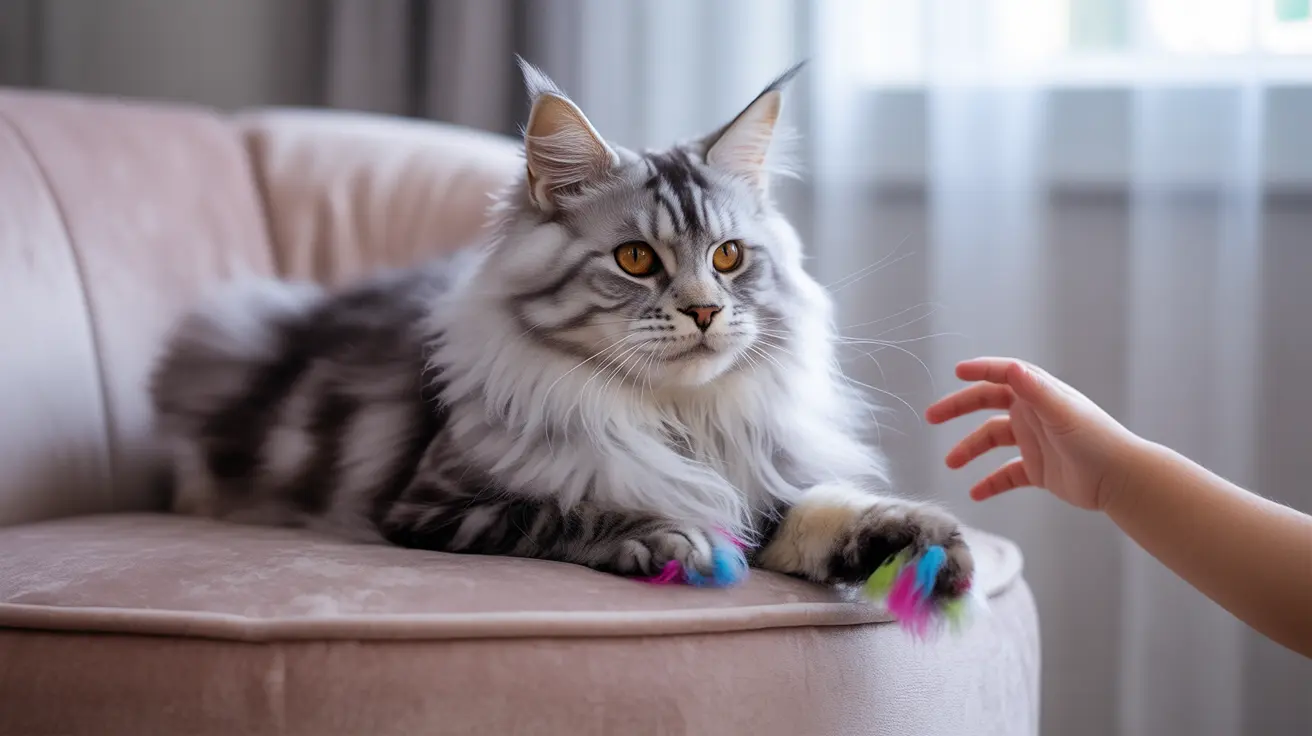What Are Cat Nail Caps?
Cat nail caps are small, protective vinyl covers that attach to your cat's claws using pet-safe adhesive. These innovative accessories have become increasingly popular among cat owners looking for humane alternatives to declawing while protecting their furniture and family members from scratches.
These caps, available in various sizes and colors, work by covering the sharp tips of your cat's claws while still allowing natural nail growth and retraction. Popular brands like Soft Paws® have made these products widely accessible to pet owners seeking a balance between their cat's natural behaviors and household protection.
The Benefits of Cat Nail Caps
Protection for Your Home and Family
One of the primary advantages of cat nail caps is their effectiveness in preventing damage to furniture, carpets, and other household items. They significantly reduce scratching damage while allowing cats to maintain their natural scratching behavior. For families with young children or elderly members, nail caps can provide an extra layer of safety against accidental scratches.
A Humane Alternative
Unlike declawing, which involves surgical amputation and can cause lasting physical and behavioral issues, nail caps offer a temporary and non-invasive solution. They preserve your cat's natural anatomy while providing scratch protection, making them a more ethical choice for many pet owners.
Cost-Effective Solution
When compared to the expense of replacing damaged furniture or treating accidental scratches, nail caps are remarkably cost-effective. A single kit typically lasts several applications, making it an economical choice for long-term scratch prevention.
Potential Drawbacks and Considerations
Application and Maintenance Challenges
The application process can be challenging, especially with cats who dislike having their paws handled. Caps typically need replacement every 4-6 weeks as natural nail growth causes them to fall off. This ongoing maintenance requires commitment and patience from pet owners.
Behavioral Impact
Some cats may experience stress or behavioral changes when wearing nail caps. Since scratching is a natural behavior used for marking territory and emotional expression, some cats might become anxious or frustrated when their ability to scratch effectively is limited.
Safety Concerns
While generally safe when properly applied, there are some risks to consider. Caps that are too tight or improperly applied can cause discomfort or infection. There's also a small risk of cats chewing off and swallowing the caps, though this is rare with proper application and monitoring.
Best Practices for Using Cat Nail Caps
Success with nail caps largely depends on proper application and monitoring. Always trim your cat's nails before applying caps, ensure proper sizing, and use only pet-safe adhesive. Regular checks for signs of discomfort or loose caps are essential for your cat's safety and comfort.
Alternative Solutions
If nail caps aren't suitable for your cat, consider alternatives such as regular nail trimming, providing multiple scratching posts, or using deterrent sprays. Environmental enrichment and behavioral training can also help redirect unwanted scratching behavior.
Frequently Asked Questions
What are the main benefits of using cat nail caps for indoor cats?
Indoor cats benefit from nail caps through reduced furniture damage, decreased risk of household scratches, and maintained natural scratching behavior without the need for declawing. They're particularly beneficial in multi-cat households or homes with young children.
How often do cat nail caps need to be replaced and what is involved in their maintenance?
Cat nail caps typically need replacement every 4-6 weeks as they naturally fall off with nail growth. Maintenance involves regular monitoring, removal of loose caps, and reapplication as needed. Each application session takes about 15-20 minutes.
Can cat nail caps cause discomfort or behavioral problems in cats?
Some cats may experience initial discomfort or stress while adjusting to nail caps. Behavioral changes might include excessive grooming, walking oddly, or showing signs of anxiety. These issues usually resolve as cats adapt, but some never adjust well to wearing caps.
Are cat nail caps a safe and humane alternative to declawing my cat?
Yes, nail caps are generally considered a safe and humane alternative to declawing. Unlike declawing, which permanently removes the last bone of each toe, nail caps are temporary and non-surgical, preserving your cat's natural anatomy and behaviors.
What are the risks of using nail caps for outdoor cats or cats that like to climb?
Nail caps are not recommended for outdoor cats or frequent climbers as they reduce climbing ability and natural defense mechanisms. This limitation could put outdoor cats at risk from predators and make escape from dangerous situations more difficult.






